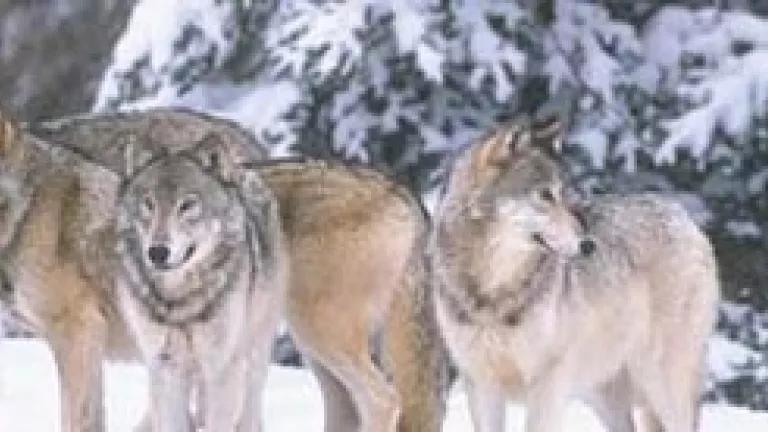
Last week, a federal appeals court rejected a Hail Mary lawsuit by conservationists, who had challenged the constitutionality of Congress’ forcible removal of wolves from the endangered species list. In the meantime, wolves are being killed by the hundreds in Idaho while Wyoming chomps at the bit to join the cull and Midwest states prepare for wolf hunts of their own (often, it must be said, in contravention of their existing wolf management plans). Under these circumstances, it would be easy to think that the “anti-wolf” activists had the upper hand. But that would be wrong. The truth is that the “wolf wars” have been largely won: by wolves.
Why? Because wolf populations were allowed to rise to sufficient levels in their core lower-48 population clusters (the Northern Rocky Mountains in the West and Minnesota and Wisconsin in the Upper Midwest) that widespread dispersal from those populations—and even connections between those populations—became possible. First, wolves colonized eastern Oregon and Washington and then spread west, including at least one pack which now lives not far from Seattle. A lone wolf even ventured down into California. Meanwhile, wolves spread to the Upper Peninsula of Michigan and then into the Lower Peninsula. Wolves from the Midwest have been documented in Illinois, regularly travel to North Dakota, and a few weeks ago one nearly made it to Wyoming by way of South Dakota. Just recently, a wolf pack may have been spotted in Utah, a hop skip and jump (by wolf standards) from Colorado.
None of this would have been possible if the the wolf population had been kept to the absurdly low recovery goal of three hundred wolves for the entire Northern Rockies. Nor would it have been possible if wolf populations in the Midwest were not allowed to approach their current levels. All of which, I might add, was the result of concerted pressure and litigation at the hands of conservationists. And the result of this growth is that we may have viable wolf populations in California, Utah, Colorado, and even New York or Maine within a few decades.
With those wolves will come ecological transformation: reductions in coyote populations (the kind of reductions that a Wildlife Services agent can only dream about), more pronghorn antelope, better riparian habitat and the cold water fish that go with it, and an increase in small mammal populations that feeds more hawks, falcons, and foxes. This is why wolves matter: because they restore and transform ecosystems like little else.
What stands in the wolves’ way? Ironically, one of their major obstacles may be the U.S. Fish and Wildlife Service, which last month said that it may propose removing all federal protections for wolves outside of their current range. If that is allowed to happen, much of this progress could be lost. Utah, for example, is simply not prepared to tolerate any wolves within its borders. And it’s fair to say that the only thing staying Utah’s hand right now is the federal government. Similarly, wolves need federal protections if they are to successfully disperse into the Northeast.
Right now, the future of wolves is bright. As a species they stand on the edge of re-colonizing large chunks of their former range. Our wild places need them. But the Fish and Wildlife Service seems determined to get out of the wolf business entirely. Too much political heat, I guess. Those of us who recognize the value of wolves will have to convince the Department of the Interior and President Obama to give wolves the time and space they need, so they can reestablish viable populations in locations with suitable habitat around the country--particularly the Northeast, Central Rocky Mountains, and California. They’ve earned it.

